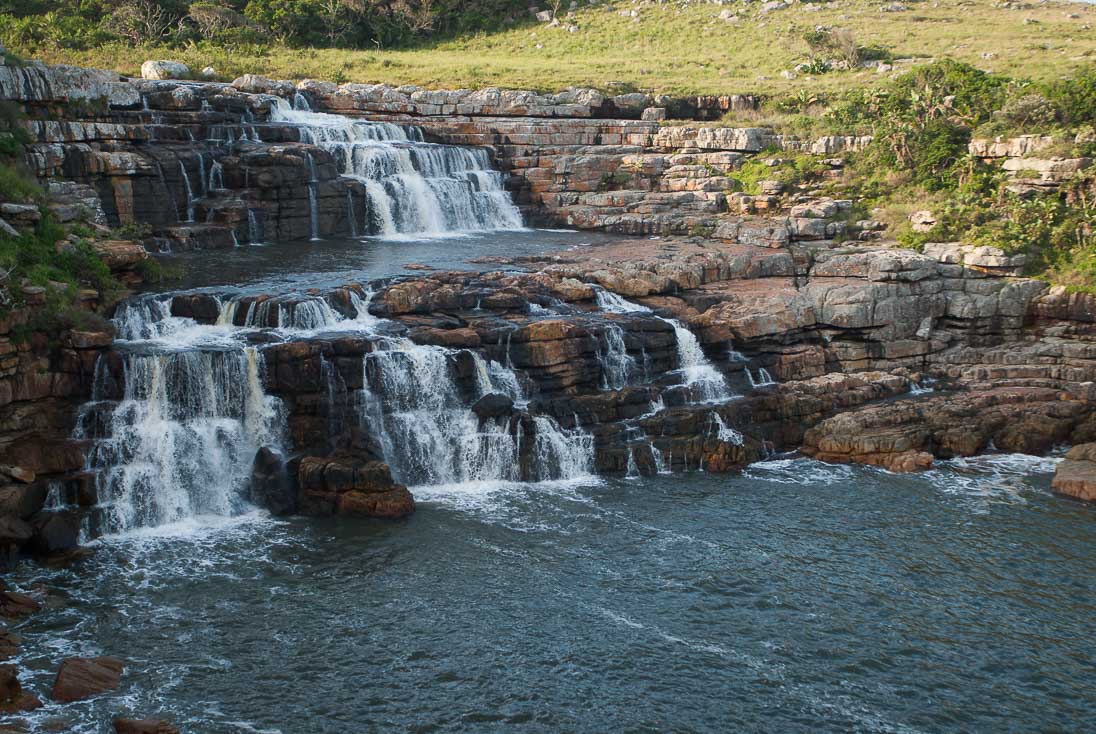Pondoland MPA
"waterfall wonderland"
Pondoland Coast, Eastern Cape
This unique stretch of the Wild Coast is South Africa’s largest coastal MPA and is home to an incredible diversity of marine life, including many threatened fishes.
This 1237.3 km2 MPA stretches for 90km along the spectacular Wild Coast; from the south bank of the Mzamba River to the north bank of the Umzimvubu River at Port St Johns. The MPA extends approximately 10km offshore to the 1000m depth contour. Some of our healthiest estuaries are protected in this MPA. The wild and rugged shoreline of this MPA is characterised by rocky shores backed by grasslands and forests, while along the spectacular Waterfall Bluff, which is part of the Egosa Fault, waterfalls drop nearly 100m directly into the ocean below. This MPA protects the rich diversity of marine fish found in the area including heavily overexploited linefish species such as red steenbras, black musselcracker, scotsman, yellowbelly rockcod and many others. The MPA is in an important transition area between the subtropical waters to the north and the warm temperate waters to the south. It is thus home to a high percentage of endemic species found nowhere else in the world. The offshore reefs are also known to be important spawning grounds for migratory fish species such as geelbek and seventy-four, which have been heavily depleted by intensive fishing effort. Research in the MPA has shown that many important linefish species are more abundant and larger in the no-take zones than in the controlled fishing areas. The research has also proved the benefits of the MPA to nearby fisheries. Large numbers of marine mammals such as dolphins and whales are found in this area, especially during the annual winter sardine run. Juvenile hammerhead sharks also aggregate in this area. The Mkambati MPA, which was adjacent to the terrestrial Mkambati Nature Reserve, was originally proclaimed in 1991 but was incorporated into the much larger Pondoland MPA in 2004. The MPA is now managed by the Eastern Cape Parks and Tourism Agency. Offshore the MPA is zoned into two controlled zones that buffer a large central no-take zone between the Sikombe and the Mbotyi Rivers. Endemic reef fish such as red steenbras, seventy-four, black musselcracker and scotsman are protected in the central zone which excludes all boat-based fishing. Along the shore, four short stretches of coastline are closed to fishing and invertebrate harvesting. Importantly the magnificent Mtentu and Msikaba estuaries are fully protected as part of this MPA. During the summer months large shoals of adult giant kingfish visit the Mtentu estuary creating spectacular “daisy chains” of fish at the surface, presumably to dislodge parasites.
BENEFITS
PROTECTS some of South Africa’s healthiest estuaries
protects linefish and allows for their recovery
protects a wide diversity of endemic invertebrates and seaweeds










